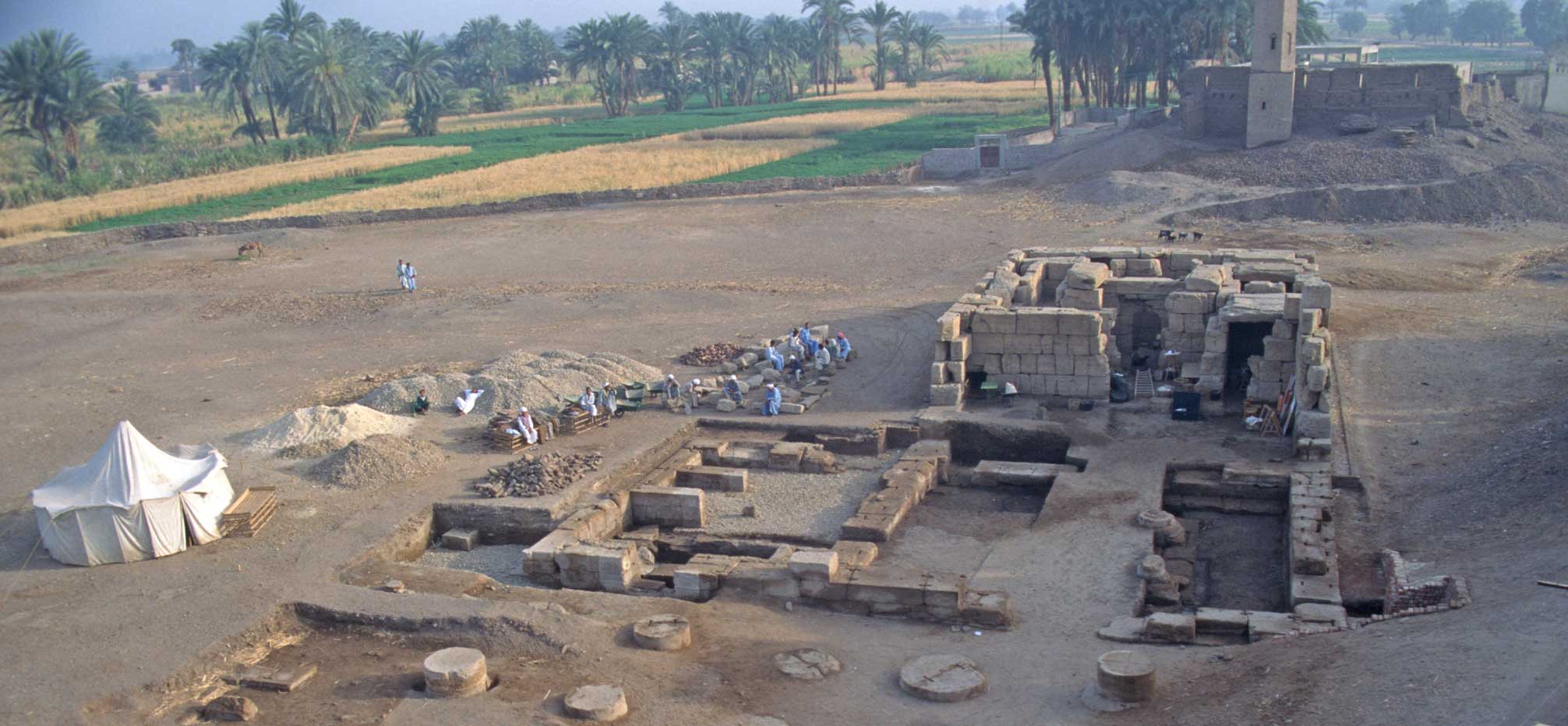The Belgian epigraphic and archaeological mission at Shanhur
Update : August 2017 Dr Harco Willems
In 1992 KU Leuven, then in collaboration with the Université Charles de Gaulle Lille III, began research at the Roman Period temple and surrounding settlement at Shanhur, near Luxor. Initially, the project was directed by Jan Quaegebeur, and, since the latter's death, by Harco Willems. Research has been mainly funded by the Research Foundation - Flanders and the Special Research Fund of KU Leuven. This enabled an intensive programme of field research until 2001. In 2010, in collaboration with Swansea University (Martina Minas-Nerpel), a last field season was carried out sponsored by the Gerda Henkel Stiftung.
During the field campaigns, it has been possible to reconstruct the building history of the temple, which was initiated under Augustus, and where the latest texts date to the reign of Trajan. However, occasional finds at the site suggest that the temple had earlier precursors. To date, one volume of the final publication has appeared, which describes the decoration of the interior. From this, it appears that the temple was dedicated to a form of Isis of whom four manifestations were venerated. The temple clearly stands in the theological tradition of the temples at Coptos.
Architectural study has revealed that, as a secondary addition, a colonnade was built around the rear part of the temple (or at least at the northern and western sides), giving the building the partial appearance of a peripteral temple. As of the fifth century AD, the building became inhabited by Copts. There are clear traces that they ransacked and burned the temple prior to establishing themselves. Among the spoils, some badly damaged pieces of temple equipment were found.
Currently, the second volume, presenting the full publication of the exterior decoration, is nearing completion.

